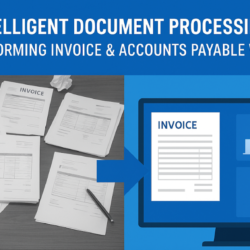The process of launching a web site can be such an immense task – but with WordPress it becomes very easy. If you want to develop your personal blog, portfolio, or online business, you are better to master the very first step towards success, which is developing the WordPress setup process. Other tools such as the WP-1Click are even simpler to set up by simplifying installation and necessary settings.
This tutorial will take you through all that you require to start a WordPress site without fear, whether the selection of hosting to the use of plugins and themes, security, optimization, and others. You may be a complete noob, but don’t fret it all, you are not going to feel that way after the end!
Why Choose WordPress?
Before diving into setup, let’s quickly explore why WordPress dominates web development:
- It powers over 40% of the world’s websites
- It’s free, open-source, and endlessly customizable
- Supports blogs, eCommerce, communities, portfolio sites — anything!
- Thousands of plugins and themes enhance functionality
- SEO-friendly structure for better search ranking
If you want a scalable, modern, and user-friendly website — WordPress is the go-to.
Step 1: Choose a Domain & Hosting Provider
Your domain name = your online identity
Your hosting provider = storage + performance + security for your website
Tips for selecting a domain
- Keep it short and memorable
- Use keywords or a brand-based name
- Prefer .com extension if available
- Avoid hyphens and numbers
Types of Hosting
| Hosting Type | Best For | Pros | Cons |
| Shared Hosting | Beginners | Affordable, easy setup | Limited performance |
| VPS Hosting | Growing websites | Higher speed & control | More expensive |
| Managed WP Hosting | Non-tech users | Optimized for WordPress, enhanced security | Higher cost |
| Dedicated Hosting | High-traffic websites | Maximum resources | Technical & costly |
Choose hosting that guarantees:
✅ 99% uptime | ✅ Free SSL | ✅ 24/7 support | ✅ Automated backups
Step 2: Install WordPress
Most hosts provide One-Click WordPress Installation tools.
If you prefer manual installation:
- Download WordPress from wordpress.org
- Upload to hosting via cPanel/File Manager
- Create a database & database user
- Run the setup wizard
- Configure basic site settings
Pro Tip: Enable SSL (HTTPS) before launching your site!
Step 3: Select the Right Theme
Your theme controls:
- Design
- Layout
- Mobile responsiveness
- Overall user experience
What to look for in a theme:
- Fast loading speed
- Regular updates
- SEO-friendly design
- Page-builder compatibility (Elementor, Gutenberg, Divi)
- Responsive for both desktop and mobile
Popular beginner-friendly themes:
| Theme | Ideal Usage | Price | Page Builder Support |
| Astra | Blogs, Businesses | Free + Paid | Yes |
| GeneratePress | Performance-focused sites | Free + Paid | Yes |
| OceanWP | All-purpose | Free + Paid | Yes |
| Neve | Startups, Agencies | Free + Paid | Yes |
Step 4: Install Essential WordPress Plugins
Plugins add extra power to your website. But don’t overload — too many plugins can slow things down.
Here are must-have categories:
| Category | Plugin Recommendations | Purpose |
| Security | Wordfence, Sucuri | Protect site from threats |
| SEO | Yoast SEO, Rank Math | Improve Google ranking |
| Performance | WP Rocket, LiteSpeed Cache | Speed optimization |
| Contact Forms | WPForms, Contact Form 7 | Create forms easily |
| Backups | UpdraftPlus, Jetpack | Restore data anytime |
| eCommerce | WooCommerce | Sell online |
Install only what you need — quality > quantity!
Step 5: Create Essential Website Pages
A solid WordPress site includes:
- Homepage – first impression matters!
- About – who you are and what you offer
- Contact – easy way to reach you
- Services/Products – detail what you provide
- Blog – share updates, build SEO
- Privacy Policy & Terms – important for trust and compliance
→ Keep URLs simple and readable (Ex: /about, /contact)
Step 6: Master WordPress Settings
Head over to Dashboard → Settings
And configure:
✔ Site title + tagline
✔ Correct permalink structure (use Post Name for SEO)
✔ Timezone + language
✔ Comments moderation
✔ Reading settings (blog vs static homepage)
A well-configured site performs better and provides a good user experience.
Step 7: Optimize Performance
Speed is everything online!
Quick performance boosters:
- Compress images (use WebP format)
- Use caching plugins for faster loading
- Choose lightweight themes
- A CDN (Content Delivery Network) improves global access
- Minimize large scripts and unnecessary media
- Keep WordPress & plugins updated
Fast websites rank higher and keep visitors happy — nobody likes slow pages!
Also Read: Google Workspace vs Microsoft 365
Step 8: Build Modern & Responsive Pages
Most beginners love drag-and-drop page builders for easy creativity:
Popular options:
| Page Builder | Best Feature |
| Elementor | Visual design freedom |
| Gutenberg | Default lightweight editor |
| Divi | Full theme customization |
| Beaver Builder | Developer-friendly |
This is also where you can use tools for Building Modern Websites by combining creativity with user-focused designs.
Step 9: Ensure Top-Notch Security
Security should never be an afterthought.
Tips to protect your website:
- Always use strong admin passwords
- Disable file editing from dashboard
- Use reCAPTCHA for forms
- Perform scheduled backups
- Enable firewall protection
- Regularly scan for malware
Your goal: Keep users’ data safe and the website running smoothly!
Step 10: Launch & Grow!
Once everything is ready — hit Publish and go live!
But don’t stop there — your site needs continuous:
- SEO improvements
- Content publishing
- Plugin & theme updates
- Security checks
- Performance monitoring
Growth is a long-term strategy — consistency is key.
Final Thoughts
Learning how to set up WordPress is one of the most intelligent investments you are going to make in your web life. The correct theme, use of plugins, hosting, security, and performance optimization will make the difference, as your web site will be started with success in mind.
In case you want stress-free experience, continue the process of refining and improving your site with time. WordPress is all about complete control – it is versatile enough to expand with your ambitions and objectives.
Want to know more about security on your new location? Set sail in this useful beginner guide: Website Security for Beginners




